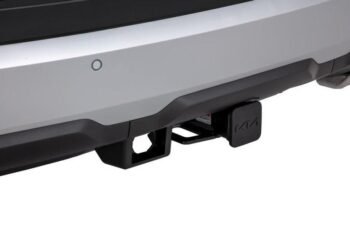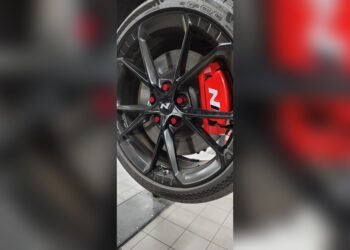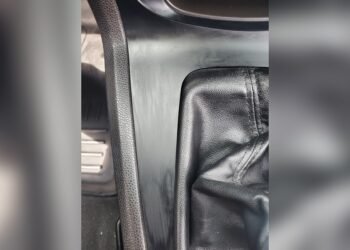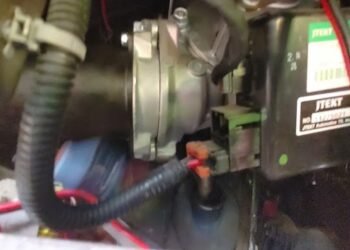Is hood insulation really necessary for your vehicle? You might think it’s just an extra layer that doesn’t do much, but the truth is, it plays a key role in protecting your car and improving your driving experience.
Without proper insulation under your hood, you risk damage to your paint, louder engine noise, and even overheating of important components. Whether you live in a hot climate like Austin, Texas, or simply want to keep your car running smoothly for years, understanding the benefits and drawbacks of hood insulation can save you time and money.
Keep reading to find out why hood insulation might be one of the smartest additions for your vehicle—and when you might be able to skip it.
Benefits Of Hood Insulation
Hood insulation offers several important benefits for your vehicle. It protects the hood’s paint from heat damage. It also reduces noise coming from the engine. The insulation helps shield engine parts from excessive heat. For cars with aftermarket hoods, insulation provides extra protection and durability.
These benefits improve your car’s performance and appearance. They also help maintain a quiet and comfortable driving experience. Understanding these advantages shows why hood insulation is often necessary.
Protecting Hood Paint
Engine heat can harm the paint under the hood. It may cause the paint to blister, crack, or peel. Hood insulation acts as a barrier against this heat. It keeps the paint in good condition for a longer time. This saves you from costly repairs and repainting.
Reducing Engine Noise
The engine creates noise when running. Hood insulation absorbs and dampens this sound. It lowers noise levels inside the car cabin. This makes your ride quieter and more pleasant. Noise reduction also reduces stress during long drives.
Shielding Engine Components
Heat from the engine can damage parts nearby. Hood insulation helps manage this heat. It prevents engine components from overheating. Cooler parts last longer and work better. This reduces the chance of engine failures or costly fixes.
Safeguarding Aftermarket Hoods
Aftermarket hoods often use materials like fiberglass or carbon fiber. These materials can be sensitive to heat. Hood insulation protects the structure and finish of these hoods. It prevents warping or discoloration caused by engine heat. This keeps your custom hood looking new and strong.

Credit: www.reddit.com
Situations Where Insulation Is Less Critical
Not all vehicles or conditions require hood insulation to be a must-have. Some situations make insulation less critical. Understanding these can help you decide if your car truly needs it.
Hood insulation mainly protects against heat and noise. But if your car or environment does not stress these factors, insulation might be optional.
Removing Insulation Without Issues
Some drivers remove hood insulation without any problems. This is often true for cars without turbochargers. The engine heat is lower in such cases. If the vehicle runs smoothly and the hood paint stays intact, insulation may not be essential.
People living in mild climates often report no damage or noise increase after removal. This shows insulation is less critical when heat and noise levels are naturally low.
Vehicles Without Standard Hood Insulation
Many new car models come without hood insulation as standard. Manufacturers may skip it for cost or design reasons. These vehicles operate fine without it. Their engines produce less heat or noise. This proves insulation is not always needed.
Aftermarket or specialty vehicles also may lack insulation. Some owners choose to run without it, especially if the hood material resists heat well.
Climate Impact On Necessity
Climate plays a big role in deciding if insulation is necessary. Hot climates increase engine heat stress. Insulation helps protect the hood and parts.
In cooler regions, engine heat is less intense. Noise levels are often lower too. This reduces the need for hood insulation. Dry or temperate climates often see less benefit from added insulation.
Materials Used For Hood Insulation
Hood insulation relies on specific materials to manage heat and noise effectively. These materials protect the vehicle’s hood and improve driving comfort. Each type serves a unique purpose, combining to offer full protection under the hood.
Foam And Foil Composites
Foam and foil composites are common in hood insulation. The foam layer traps air, reducing heat transfer. The foil acts as a barrier to reflect radiant heat away from the hood. Together, they help keep the hood cooler and protect the paint from damage. These materials are lightweight and easy to install, making them popular choices.
Sound Dampening Properties
Hood insulation also works to reduce engine noise. Materials with sound dampening properties absorb vibrations and muffled sounds. This creates a quieter cabin experience for drivers and passengers. Dense foams and special fibers are often used to achieve this effect. Lower noise levels make driving more comfortable and less tiring.
Heat Resistant Fabrics
Heat resistant fabrics add extra protection against high temperatures. These fabrics can withstand intense heat from the engine without breaking down. They help protect the hood’s surface and other components nearby. Common heat resistant fabrics include fiberglass and ceramic blends. These materials improve the durability and safety of hood insulation.
Credit: www.secondskinaudio.com
Installation And Replacement
Proper installation and timely replacement of hood insulation are key to maintaining your vehicle’s performance. Hood insulation shields the engine bay from extreme heat and reduces noise. Understanding the process of installing or replacing it can save you money and extend your car’s life.
Diy Installation Tips
Start by cleaning the hood’s underside thoroughly. Remove any old insulation or adhesive residue. Use a strong, heat-resistant adhesive to fix the new insulation pads. Measure and cut the insulation to fit snugly. Wear gloves to avoid irritation from insulation fibers. Press the insulation firmly and hold for a few minutes. Allow the adhesive to cure before closing the hood. Check for loose edges regularly and reapply adhesive if needed.
Cost Factors
Hood insulation costs vary by material quality and vehicle type. Basic insulation pads are affordable and easy to find. Higher-end materials offer better heat resistance and durability. Labor costs increase if a professional installs the insulation. Some cars require special tools or parts, raising the overall cost. DIY installation saves money but needs proper tools and time. Consider the balance between cost and long-term benefits before deciding.
When To Replace Hood Insulation
Replace hood insulation if it looks worn or damaged. Signs include cracks, tears, or missing sections. Foul odors or dampness under the hood signal moisture buildup. If the insulation no longer reduces engine noise, it may be failing. Heat damage like discoloration or melting requires immediate replacement. After an engine fire or overheating incident, inspect and replace insulation. Regular checks every few years help catch problems early.
Common Questions About Hood Insulation
Many car owners wonder about hood insulation. Questions arise about its need, safety, and types. This section answers common queries about hood insulation. It explains whether hood insulation is necessary and explores alternatives.
Do You Really Need Hood Insulation?
Hood insulation protects the paint from engine heat. It also reduces noise inside the car. Without it, heat can damage the hood’s finish. Cars with powerful engines benefit most from insulation. It helps keep engine parts cooler. Some vehicles may run without it but risk damage over time. Installing hood insulation is a smart choice for durability.
Can You Drive Without It?
Yes, you can drive without hood insulation. Many cars operate fine without it in mild climates. But driving without insulation may cause more engine noise. Heat buildup under the hood can increase. This can shorten the life of some engine parts. In hot areas, lack of insulation might cause paint damage. For long-term care, insulation is recommended.
Heat Shield Vs. Insulation Pad
A heat shield blocks intense heat from the engine. It protects the hood’s paint and nearby parts. An insulation pad reduces heat and sound inside the car. It adds a layer that absorbs noise and heat. Some vehicles use both for better protection. Heat shields focus on heat defense. Insulation pads balance heat and noise control. Choosing depends on your car and needs.

Credit: www.reddit.com
Frequently Asked Questions
Do I Need A Heat Shield On My Hood?
A heat shield on your hood protects paint from heat damage, reduces engine noise, and safeguards engine components. It’s essential for performance or aftermarket hoods. Some cars run fine without it, but installing one helps prevent heat-related issues and prolongs component lifespan.
What Can I Use As Hood Insulation?
Use heat-resistant materials like fiberglass, foam, or foil insulation pads for effective hood insulation. These reduce engine heat and noise.
How Much Does It Cost To Replace Hood Insulation?
Replacing hood insulation typically costs between $50 and $150, depending on vehicle type and labor rates. DIY replacement can lower expenses.
What Is The Padding Under The Hood Called?
The padding under the hood is called a hood insulation pad or heat shield. It reduces engine noise, protects paint, and shields components from heat.
What Is The Main Purpose Of Hood Insulation?
Hood insulation protects the hood’s paint from engine heat and reduces noise inside the car.
Conclusion
Hood insulation plays a key role in protecting your vehicle. It shields paint from heat damage and reduces engine noise. It also helps keep engine parts cooler and lasts longer. Some cars may run fine without it, especially in mild climates.
Still, for most vehicles, hood insulation is a smart choice. It adds protection without much cost or effort. Think of it as simple care for your car’s hood and engine. Keeping your vehicle safe and quiet is always worth it.

















